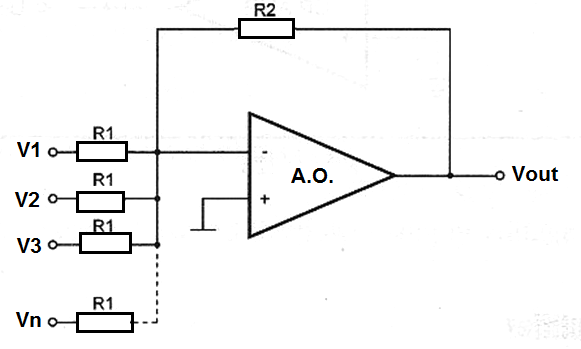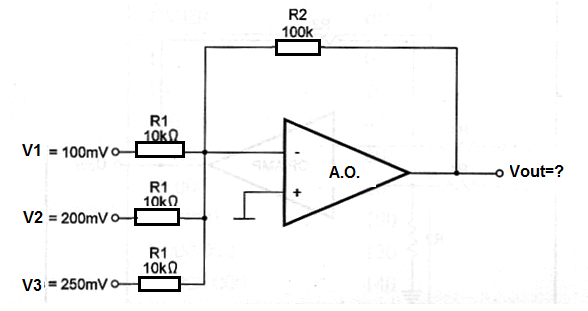The basic configuration of a summing amplifier using operatinal amplifier is shown in figure 1. The output voltage is the algebraic sum of the input voltages times the gain given by R2 and R1 ratio.

Formula:
Summing amplifier:
Vout = (R2 / R1) x (V1 + V2 + V3 + ….. + Vn)
Where:
Vout is the output voltage in volts (V)
V1, V2....Vn are the input voltages in volts (V)
R1, R2 are the resistances in ohm (Ω)
Application example:
In the summing amplifier shown in figure 2, R2 is a 100 kΩ resistor and R1 a 10 kΩ. Determine the output voltage when the input voltages are V1=100 mV, V2 = -200 mV and V3 = 250 mV.

Data:
R2 = 100 kΩ
R1 = 10 kΩ
V1 = 100 mV
V2 = -200 mV
V3 = 250 mV
Vout = ?
Applying formula:
Vout = [ (100 x 103) / (10 x 103) ] x (100 x 10-3 - 200 x 10-3 + 250 x 10-3)
Vout = 10 x (150 x 103)
Vout = 1500 mV
Vout = 1.5 V



